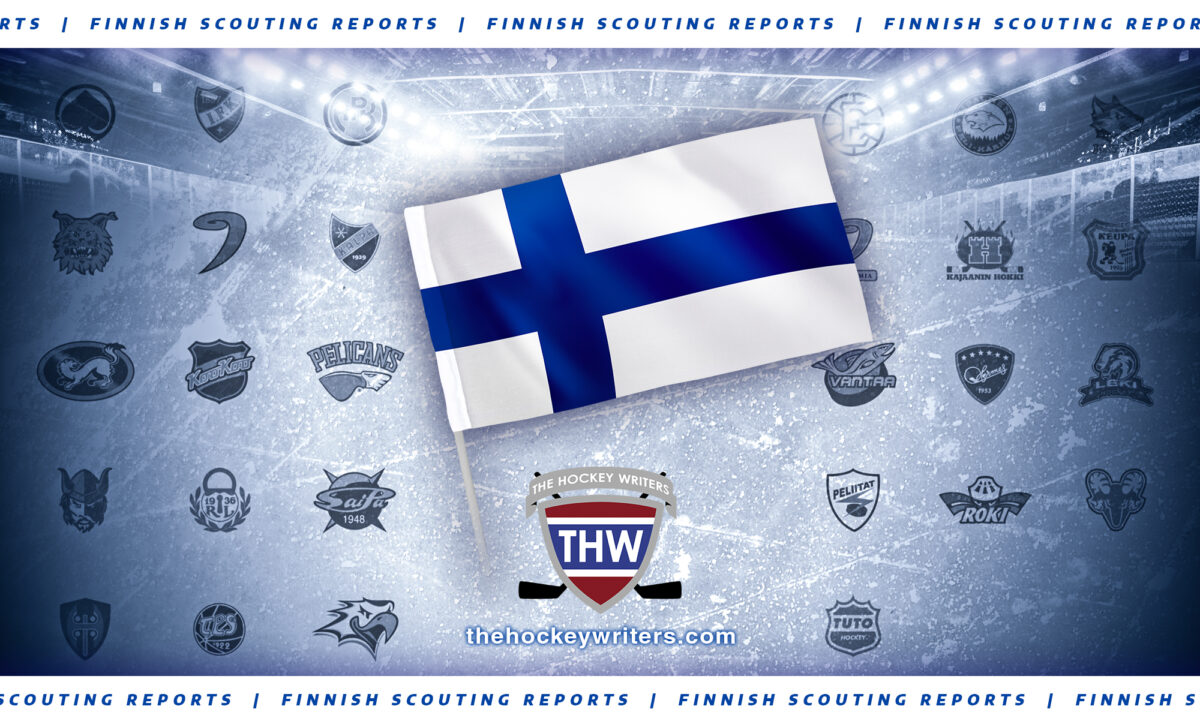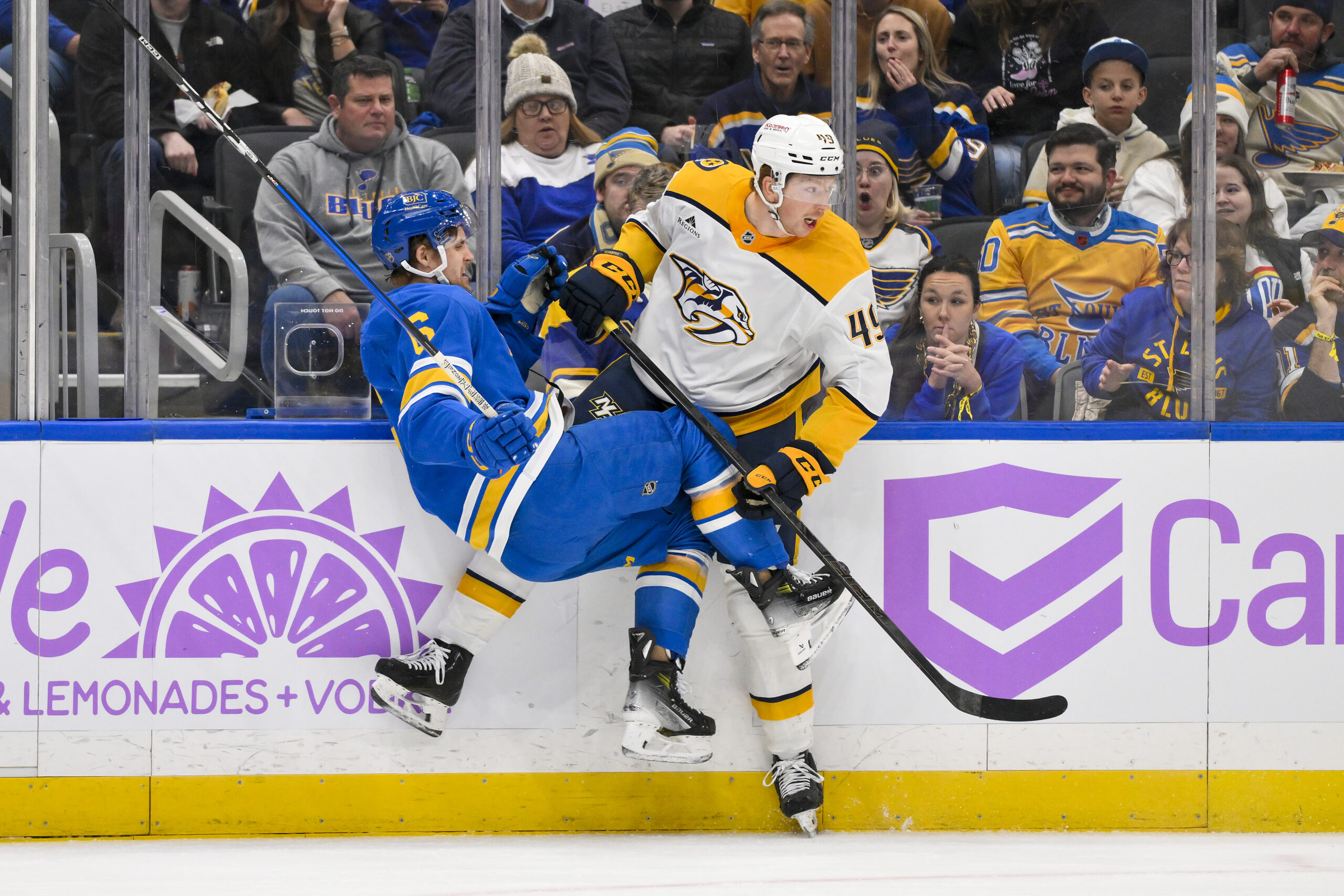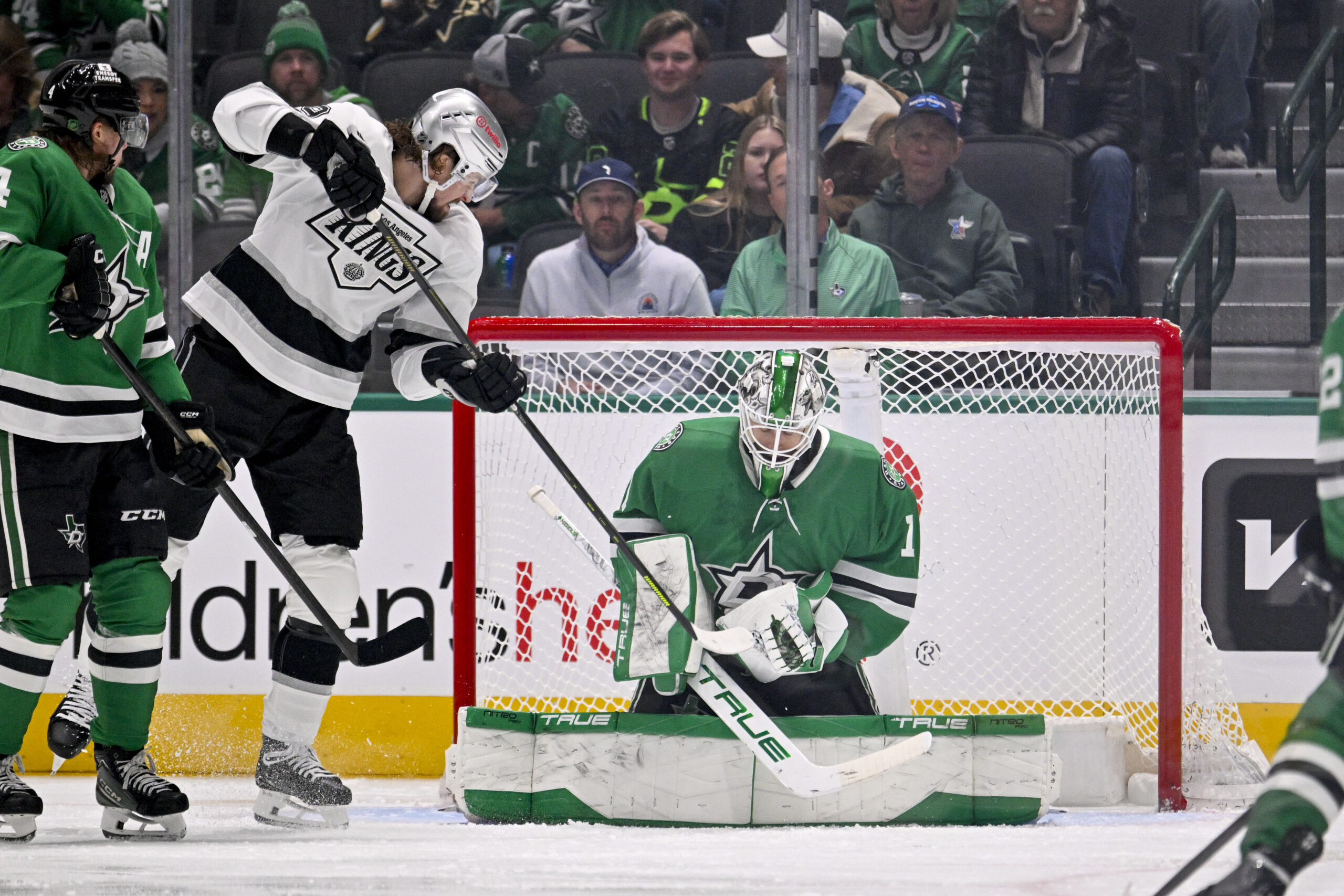A lot of the time, the goal for any team not already in the top tier of Finnish hockey, Liiga, is to get there. Thanks to the promotion and relegation system, that’s possible by winning your division and then defeating a higher-division team in a promotion/relegation series. That goal is often the top priority for hockey clubs at every level, from youth to adult.
The higher your teams stand across the divisions, the better the competition they’ll face, which helps develop both kids and adult players. It also brings more exposure to your club, attracting new players and supporters. More people means more revenue, and more revenue means more opportunities to invest back into your club. That cycle helps grow your teams until, hopefully, every age group is winning championships at the highest level, cementing your club’s legacy as one of the greats.
Related: How Jerkko Virtala Fits into Nokian Pyry’s Mestis Ambitions
All that to say: this is the dream. And while this goal is shared across sports teams and organizations everywhere, the path to achieving it, and the environment around it, is different in Finland than in North America.
So, welcome back to Post 2 of my coverage of Nokia Pyry’s rise. If you missed the last article, you can catch up on it below.
Club and Team Structure
In North America, when people think about hockey, they usually picture NHL teams, corporate-owned, pro-level franchises with neatly separated junior and minor league affiliates. But in Finland, a hockey club isn’t just a team. It’s a system. A family. A lifelong community.
Most Finnish clubs operate as multi-level organizations. From U8 all the way up to the top men’s team, the entire development pipeline lives under one roof, one logo, one philosophy, one shared purpose. Whether you’re watching HPK’s Liiga squad or their U18 team, it’s all part of the same club. That structure encourages a strong sense of continuity and local loyalty, with kids growing up inside the system they hope to one day represent on the pro stage.
Behind the scenes, this system is overseen by the Finnish Ice Hockey Association (SJL), which sets clear development standards, mandates national coaching certifications, and organizes top talent camps like Pohjola Camp. There’s a centralized effort to ensure every player, from every region, has access to quality coaching and a development path. Compare that to the U.S., where USA Hockey regulates youth hockey broadly, but NHL teams are completely independent from the youth game and have no obligation to build pipelines at the grassroots level.
Even the financial backbone is different. Many Finnish clubs receive municipal support, whether that’s discounted rink time, operating grants, or community partnerships. Some operate as non-profits or member-driven associations. In the NHL, ownership is corporate, arenas are multi-million-dollar venues, and deals often involve complex public-private funding agreements focused on maximizing profit and entertainment value.
The result is a very different kind of hockey culture. In Finland, it’s a model built on sustainability, community, and long-term identity, not just bottom lines. But it also means the hockey can look different. Finnish clubs are exceptional at developing well-rounded players and cohesive systems, but they don’t always deliver the same kind of night-in, night-out elite spectacle that the NHL does. The NHL is where you go to see the fastest, most skilled hockey in the world, every game stacked with speed, physicality, and high-end talent. That doesn’t mean Finland lacks flash, but it does mean the goals are different.
Budget and Talent Pool
If you’ve followed both North American and Finnish hockey, you’ve probably noticed a striking difference: the money. NHL teams operate in a completely different financial universe compared to their Finnish Liiga counterparts—and the reasons go far beyond just population size.
The NHL sits at the center of a global sports engine. It has access to a massive domestic market, corporate sponsors, luxury arenas, and a $600-plus million per year U.S. broadcasting deal. That media revenue alone dwarfs the combined budgets of every Liiga team. Add in global merchandise sales, expensive ticket prices, and high-end hospitality suites, and the financial scale becomes clear. NHL teams are run like billion-dollar corporations built to grow and profit.
Meanwhile, most Finnish clubs are community institutions. Many operate as non-profits or co-ops, receiving support from municipalities and local sponsors. Arena capacities are modest, tickets are affordable, and team revenues reflect the size of Finland’s population, just 5.5 million people. Even the best-funded Liiga teams operate on budgets comparable to what one NHL star might earn in a single season. Research from LUT University’s Liiga finance thesis outlines the significant budgetary constraints Finnish clubs face, often operating with revenue smaller than a single NHL player’s salary
But here’s a twist: despite the budget gap, Finnish clubs continue to develop elite talent, build cohesive rosters, and stay competitive internationally. However, most of the talent pool is homegrown, domestic talent, whereas NHL teams have the budget and recognition to pull players from anywhere in the world. When a Liiga club considers bringing in an international import, it must carefully balance budget and performance to avoid harming the long-term health of the organization. As I discussed in my previous article, bankruptcy is a real threat for hockey teams in Finland, and financial sustainability must guide every decision.
League Structure and Competition
One of the most interesting differences between Finnish hockey and the NHL isn’t just the size of the budgets or the arenas, it’s the very structure of the leagues themselves. In Finland, performance on the ice can literally determine your team’s future. In North America? Not so much.
As of the 2023–24 season Liiga officially reopened its promotion and relegation system. That means the worst-performing teams in the league can now be demoted to Mestis (the second tier), while the best Mestis teams have a shot at earning a place in Liiga, if they also meet the licensing criteria. This injects a level of drama and accountability that NHL fans simply don’t experience. There’s no tanking for a better draft pick when your club’s entire top-tier status is on the line.
What’s more, this structure applies even to youth levels. U18 and U20 teams in Finland also face promotion and relegation, which means performance matters across every age group. Clubs can’t just stockpile talent, they need to win to stay at the top of their division. In the U.S. and Canada, youth teams typically get placed in leagues through tryouts, tuition payments, or club reputation, not seasonal results.
And then there’s player movement. In Finland, it’s common to see players on short-term contracts moving between teams, or even returning to a former club multiple times throughout their career. Roster continuity is more fluid, partly due to financial constraints and partly because teams are constantly adjusting to stay competitive within the relegation-prone system. In the NHL, where long-term contracts and salary caps provide more stability, player movement tends to follow a much slower rhythm.
The Development and Culture of Players
If you’ve spent time watching both Finnish and North American hockey, you’ll quickly notice it’s not just the pace or the players that differ; it’s the philosophy. The two systems aren’t just separated by an ocean; they’re separated by values. Finland’s development system is often praised for its structure and consistency. As explored in Who is the Leader in Hockey Player Development?, Finland’s approach, rooted in federation oversight, coaching standards, and long-term growth, has helped establish it as one of the top talent pipelines in the world.
In Finland, development isn’t a race, it’s a process. From the youngest age groups to the U20 level, coaching is rooted in federation-guided standards. The Finnish Ice Hockey Association (SJL) emphasizes long-term skill growth, leadership development, and team-first habits. Players are taught to think, to communicate, to understand systems, not just how to score a highlight-reel goal. It’s about building a complete person, not just a flashy athlete.
This mindset comes to life in national programs like Pohjola Camp, where Finland’s top players from each birth year are invited to train, not just based on stats, but on potential, work ethic, and leadership traits. Compare that to the U.S., where development is often fragmented. While USA Hockey does run strong select camps, the system leans more toward private training, showcases, and player self-marketing. The pathway can feel scattered, and players sometimes chase short-term visibility over foundational growth.
But what truly sets Finland apart is its cultural lens. Finnish hockey reflects Finnish values: humility, quiet leadership, discipline, and team harmony. Players aren’t encouraged to showboat. Coaches rarely yell. It’s about respecting the game and earning your place through consistency. In North America, there’s a greater appetite for star power, big personalities, big moments, and big statements.
Neither approach is inherently better, but the path to success differs depending on where your hockey journey begins. If your goal is to maximize your chance of reaching the NHL, then North America, with its vast resources, scouting networks, and exposure, often provides the most direct route. But that path isn’t always financially possible for many Finnish families. That’s where the SJL steps in. Rather than trying to outspend or “out-flash” the North American system, it offers something else: a focus on growing not just skilled hockey players, but strong, capable people, with a sense of identity, community, and cultural pride.
Conclusion
To be clear, this isn’t a critique of the NHL or the American system. I think the U.S. has built an impressive and highly-efficient hockey pipeline, one that uses its immense budget and resources to push player performance to the absolute limit. But I also want to emphasize that it’s not the only way to build hockey. Every system, whether North American, Finnish, or otherwise, has its own strengths and tradeoffs. In some cases, both leagues will often not stay within the guidelines of one system; they will both take notes from success and try to add that into their own system. For further reading, Theseus.fi offers a range of research on the economics of Finnish hockey, including case studies of financially at-risk teams navigating relegation and rising costs.
It’s also important to remember that in the U.S., where you grow up matters. I live in Texas, where hockey is still very much in a growth phase. But thanks to the Dallas Stars’ arrival in 1993, there’s been a sustained, deliberate investment in growing the game, from building rinks to funding youth programs. That effort has already borne fruit with NHL players like Seth Jones, who came up through the Dallas-Fort Worth hockey community. You can note that in Panthers’ Seth Jones Finding Success, it was reported that Jones has a strong foundation in his skills. The growth of hockey in Texas, documented through Dallas Stars community reports, shows how intentional investment can turn non-traditional markets into development hubs. The American system has the flexibility to develop talent even in non-traditional markets, and it continues to expand its reach year by year.
This section was meant to serve as a kind of Rosetta Stone for NHL fans: a guide to help you better understand how professional hockey operates in Finland. That context is essential for grasping the story of Nokia Pyry; a club that has worked its way from Suomi-Sarja (Division 3) up to Mestis (Division 2). Understanding how Finnish development, governance, and competition are structured will make it clearer why Pyry’s journey is so impressive, and why their next steps are so challenging.
It also sets the stage for my next article, where I’ll dive into the specific hurdles Pyry now faces in competing at a higher tier, and what resources they realistically have available to survive and thrive. And for those following my scouting coverage at the end of every article, this framework will help show how each player I highlight fits into the broader vision of Nokia Pyry’s future.

Player Profile: Miro Ahvenlampi
Biographical & Physical Details
Shoots: Left
Position: Forward
Jersey Number: 47 (Tappara)
Age: 22 (March 28, 2003)
Height: 5-foot-10 (Mestis Average: 6-foot-0)
Weight: 172 lbs (Mestis Average: 190 lbs)
Season & League Context
In the 2024–25 season, Ahvenlampi delivered 19 points (10 goals, nine assists) in 19 games for Tappara’s U20 SM‑Sarja squad. He then translated that scoring touch to men’s hockey with a loan to LeKi in Suomi‑sarja, where he posted five goals and four assists in seven games, over a point‑per‑game pace. Recognizing his consistent production and ability to drive offense at every level, Nokia Pyry signed the 22‑year‑old to a one‑year contract for their 2025–26 Mestis season, slotting him into a middle‑six forward role where his proven scoring instincts are expected to bolster their transition to a higher league
Grading Breakdown
Grades on a 1–9 scale; Forward weights applied (Skating 20% / Shooting 20% / Passing 15% / Handling 15% / Sense 20% / Physical 10%). A breakdown of the grading system can be found here.
Skating: 6.6
Ahvenlampi showed bursts of acceleration and was able to skate around defenders in open space. His edgework allowed him to change direction quickly and recover after overcommitting on the power play, a good sign of both agility and work rate. He effectively closed space while forechecking and used his legs to draw penalties. That said, his shot mechanics slowed his overall impact; the long wind-up often made his skating-to-shot transition too slow to capitalize on prime scoring chances.
Shooting: 5.8
Ahvenlampi wasn’t hesitant to shoot, but his execution left room for improvement. The majority of his shots featured long wind-ups, reducing his threat level in quick-snap situations. However, he created quality chances by positioning himself for deflections and screens. It’s likely many of his goals come not from clean snipes but from chaos in front; rebounds, tips, and net-front scrums. To grow as a more dynamic offensive weapon, he’ll need to refine his mechanics and shorten his release.
Passing: 6.0
There was a handful of poor passes during a puck cycle on a handful of plays. Ahvenlampi made multiple solid passes while under pressure later in the game. He stayed calm as pressure closed in, finding teammates with clean feeds. While not overly flashy, his passing showed he could make smart, fast reads under stress. He just needs to work on the rhythm when making passes with teammates through a cycle to set up an opportunity.
Handling: 6.2
Ahvenlampi’s puck control looked comfortable when receiving passes, even when contested. He protected the puck well using his body and made composed decisions under pressure. In tight traffic or transition, he managed to hold possession rather than panic. Still, there were a few chaotic sequences where he didn’t create clean separation. There’s room for him to develop better puck control in lateral movement and when forced to improvise in dense areas.
Sense: 6.8
Ahvenlampi’s hockey IQ stood out in my game review. He consistently read pressure early, often reacting before opposing players could finish their motion. Whether on defense or during puck retrievals, he kept his head up and scanned for options. He adjusted positioning after faceoffs to cover gaps, filled lanes smartly in transition, and showed a great instinct for setting net-front screens without disrupting play flow. His decisions off the puck reflect high-level processing.
Physical: 6.2
Despite being a bit undersized, Ahvenlampi doesn’t shy away from contact. He leaned into physical battles, especially along the boards, using his hands and hips to generate leverage. He was aggressive and relentless, frequently harassing defenders on retrievals. However, when isolated in open ice without support, he was easier to push off the puck. His physical game will benefit greatly from increased lower-body strength and added mass over the next one to two seasons.
Overall Assessment & Outlook
Overall Grade: 6.29 | B (Fringe Mestis / Top Junior League)
Average Overall Mestis Grade: 6.45
What stands out most in Miro Ahvenlampi’s game is his read-and-react awareness and willingness to do the little things that create offense. Whether it’s setting timely net-front screens, keeping his head up in transition, or supporting the defense after faceoffs, Ahvenlampi plays with a mature understanding of where to be and when. His performance at the U20 level has been consistently high-end, and his brief Suomi-sarja stint showed early signs that he can adapt to faster, more physical hockey.
That said, the leap from junior hockey and Suomi-sarja into full-time Mestis play is a significant one. The game moves faster, decisions need to be made under tighter pressure, and puck battles get heavier. For Miro to establish himself in the lineup, he’ll need to continue refining his shot mechanics, develop a quicker release, and increase his functional strength, not just adding size, but applying it to win contested space and hold off defenders in open ice.
For the 2025–26 season, Ahvenlampi joins Pyry Hockey as they begin their Mestis campaign. His hockey sense, work rate, and comfort playing in high-traffic areas make him a valuable piece in a depth role, especially on the power play or in rotation minutes. If he can continue to build on the tools already in place and adjust to the speed of Tier 2 hockey, he could carve out a solid role for himself and become a key development success for the club.
Note: In my last article I gave Jerkko Virtala at B+ when his 6.3 score was actually a B like Miro. The score and title is correct, just the letter grade was incorrect.




